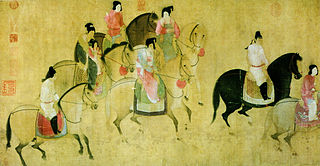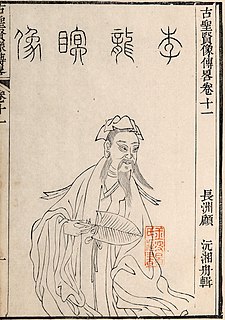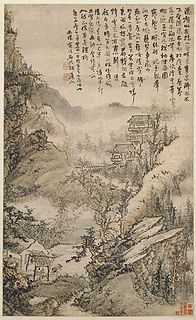This article needs additional citations for verification .(November 2020) (Learn how and when to remove this template message) |
| |||
|---|---|---|---|
| 1090s .1100s in art. 1110s |
| Art timeline |
The decade of the 1100s in art involved some significant events.
This article needs additional citations for verification .(November 2020) (Learn how and when to remove this template message) |
| |||
|---|---|---|---|
| 1090s .1100s in art. 1110s |
| Art timeline |
The decade of the 1100s in art involved some significant events.

Daphni or Dafni is an eleventh-century Byzantine monastery eleven kilometers northwest of central Athens in the suburb of Chaidari, south of Athinon Avenue (GR-8A). It is situated near the forest of the same name, on the Sacred Way that led to Eleusis. The forest covers about 18 km2 (7 sq mi), and surrounds a laurel grove. "Daphni" is the modern Greek name that means "laurel grove", derived from Daphneion (Lauretum).

Zhao Mengfu, was a descendant of the Song Dynasty's imperial family through Emperor Xiaozong's brother Zhao Bogui who married a lady surnamed Song who was the granddaughter of Emperor Huizong. Zhao Bogui was a descendant of Emperor Taizu, through his son Zhao Defang.

Zhang Xuan (713–755) was a Chinese painter who lived during the Tang Dynasty (618–907).

Li Gonglin, style name Boshi (伯時), art name Longmian Jushi, was a Chinese antiquarian, painter, and politician during the Northern Song Dynasty.

Mi Fu was a Chinese painter, poet, and calligrapher born in Taiyuan during the Song dynasty. He became known for his style of painting misty landscapes. This style would be deemed the "Mi Fu" style and involved the use of large wet dots of ink applied with a flat brush. His poetry was influenced by Li Bai and his calligraphy by Wang Xizhi.

The year 1592 in art involved some significant events and new works.
The decade of the 1470s in art involved some significant events.
The decade of the 1450s in art involved many significant events, especially in sculpture.
The decade of the 1410s in art involved some significant events.

The Nativity of Jesus has been a major subject of Christian art since the 4th century.
Tang poetry refers to poetry written in or around the time of or in the characteristic style of China's Tang dynasty, and/or follows a certain style, often considered as the Golden Age of Chinese poetry. The Quantangshi includes over 48,900 poems written by over 2,200 authors. During the Tang dynasty, poetry continued to be an important part of social life at all levels of society. Scholars were required to master poetry for the civil service exams, but the art was theoretically available to everyone. This led to a large record of poetry and poets, a partial record of which survives today. The two most famous poets of the period were Li Bai and Du Fu. Tang poetry has had an ongoing influence on world literature in modern times.
The decade of the 1240s in art involved some significant events.
The decade of the 1130s in art involved some significant events.
The decade of the 1040s in art involved some significant events.
The decade of the 1050s in art involved some significant events.
The decade of the 1080s in art involved some significant events.

The Apse of Santa María d'Àneu is a romanesque apse of the church of Santa Maria, Àneu, the transferred frescos from which are now exhibited at Museu Nacional d'Art de Catalunya, in Barcelona. The decoration of the apse of the church of Santa María d’Àneu combines themes and motifs from the Old and New Testaments. Originally painted at the Church of Santa María d’Àneu
Master of Pedret is the name given by historians to a Romanesque fresco painter active in Catalonia in the early twelfth century. The name has been given one of his most representative works, the right side of the apse of the church of San Quirze Pedret, now moved to the Museu Nacional d’Art de Catalunya, Barcelona, Spain.

Three perfections is the gathering of poets, calligraphers and painters to create an artwork in ancient China and Japan. The resulting product would be a painting that would include the work of a calligrapher to write a poem.

Wang Shen, courtesy name Jinqing, was a Chinese calligrapher, painter, poet, and politician of the Song dynasty. He is best known for his surviving paintings, poetry, and calligraphy, and for his relationships with prominent statesmen and early amateur literati artists such as Su Shi, Huang Tingjian and Mi Fu.